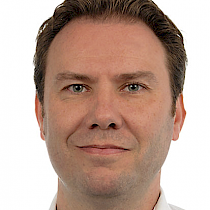Dr. Sebastian Knorr

Dr. Sebastian Knorr ist leitender Wissenschaftler und Dozent am Fachgebiet Nachrichtenübertragung der TU Berlin. Von 2017 bis 2018 war er Senior Researcher im V-SENSE Projekt am Trinity College Dublin und von 2009 bis 2016 war er Gründer und Geschäftsführer der imcube labs GmbH und der Beijing imcube Technologies Co., Ltd., sowie der CTO von imcube Technologies Limited, Hong Kong. Neben der Geschäftsführung der Unternehmen arbeitete er auch an 3D-TV und Giant-Screen-Projekten für die BBC und BSkyB als Post-Conversion Stereographer und Stereo-3D Producer.
Zwischen 2002 und 2009 war Dr. Knorr Projektleiter und Wissenschaftler am Fachgebiet Nachrichtenübertragung der TU Berlin, wo er 2008 zum Thema 2D-3D-Videokonvertierung promovierte. Er erhielt 2008 den Gründerpreis Multimedia des Bundesministeriums für Wirtschaft und Technologie und wurde in 2009 bei der Initiative "Deutschland-Land der Ideen" ausgezeichnet. In 2012 erhielt er den Scott Helt Memorial Award für die beste Veröffentlichung in den IEEE Transactions on Broadcasting.
Synopsis
Methods of storytelling in cinema have well established conventions that have been built over the course of its history and the development of the format. In 360° film many of the techniques that have formed part of this cinematic language or visual narrative are not easily applied or are not applicable due to the nature of the format i.e. not contained the border of the screen. In this context, we analyzed how end-users view 360° video in the presence of directional cues and evaluate if they are able to follow the actual story of narrative 360° films. We first let filmmakers create an intended scan-path, the so called director’s cut, by setting position markers in the omnidirectional content for eight short 360° films. Alongside this the filmmakers provided additional information regarding directional cues and plot points. Then, we performed a subjective test with 20 participants watching the films with a head-mounted display and recorded their head orientations. The resulting scan-paths of the participants are then compared against the director’s cut using different scan-path similarity measures.
Alle Sprecher
- Yasser Almaamoun
- Thorsten Bauer
- Sergey Biniaminov
- Christopher Coenen
- Prof. Ina Conradi
- Prof. Dr.-Ing. Barbara Deml
- Hon. Prof. Joséphine Derobe
- Florian Dohmann
- Felix Gaedtke
- Diego González-Zúñiga
- Prof. Lisa Gotto
- Dr. Lily Hibberd
- Prof. Johan Frederik Hartle
- Dr. Rocio von Jungenfeld
- Sönke Kirchhof
- Mario Klingemann
- Dr. Elias Knubben
- Dr. Sebastian Knorr
- Prof. Verena Kraemer
- Prof. Susanne Kriemann
- Dr. Barbara Kuon
- Prof. Frederic Fol Leymarie
- Roman Lipski
- Anja-Maria Meister
- Prof. Galina Mihaleva
- Prof. Dr. Eduardo R. Miranda
- Lauren Moffatt
- Prof. Julian Oliver
- Prof. Dr. Dr.-Ing. Jivka Ovtcharova
- Gülsel Özkan
- Prof. Matteo Pasquinelli
- Prof. Vesna Petresin
- Prof. Dr. Mark Post
- Oliver Rack
- Prof. Elke Reinhuber
- Prof. Christiane Riedel
- Dr. Ralf Schäfer
- Prof. Benjamin Seide
- Dr. Markus Schmidt
- Kathleen Schröter
- Prof. Aljoscha Smolic
- Prof. Vibeke Sorensen
- Prof. João Tabarra
- Cyril Tuschi
- Holger Volland
- Dr. Lioudmila Voropai
- Yulu Wang
Kontakt
Interesse? Fragen?
Rufen Sie uns an:
+49 (0)721 / 8100 6001
oder schreiben Sie uns:
info@beyondfestival.com




